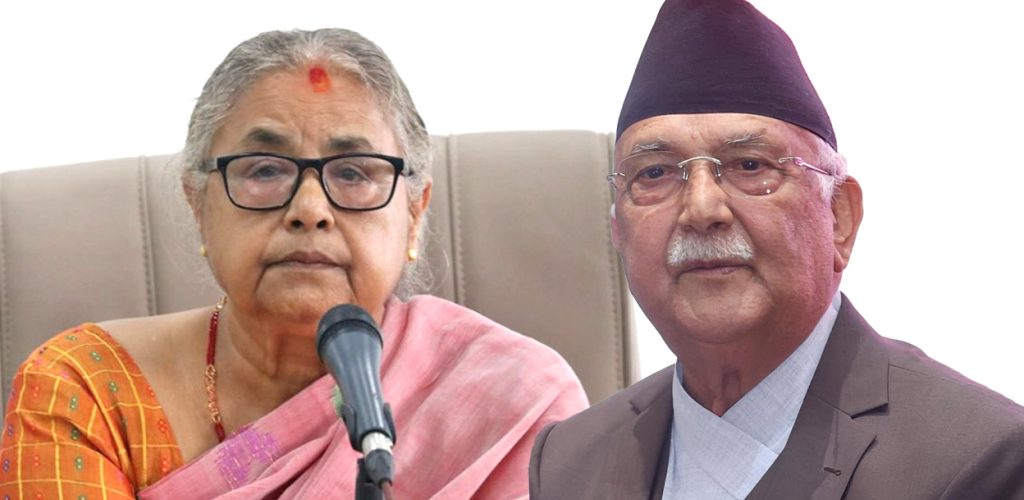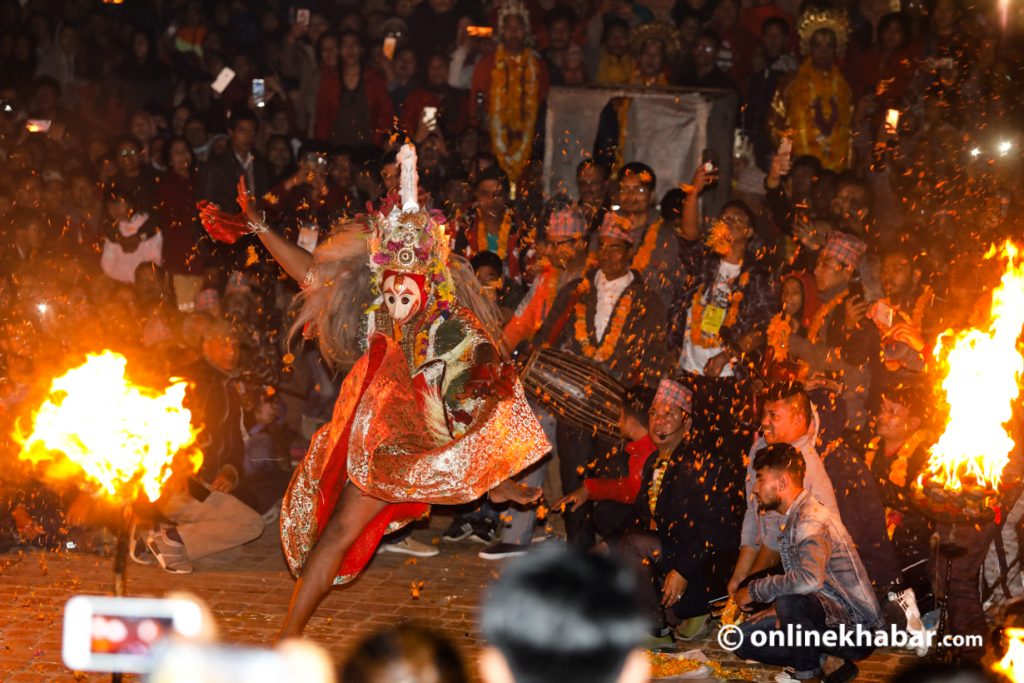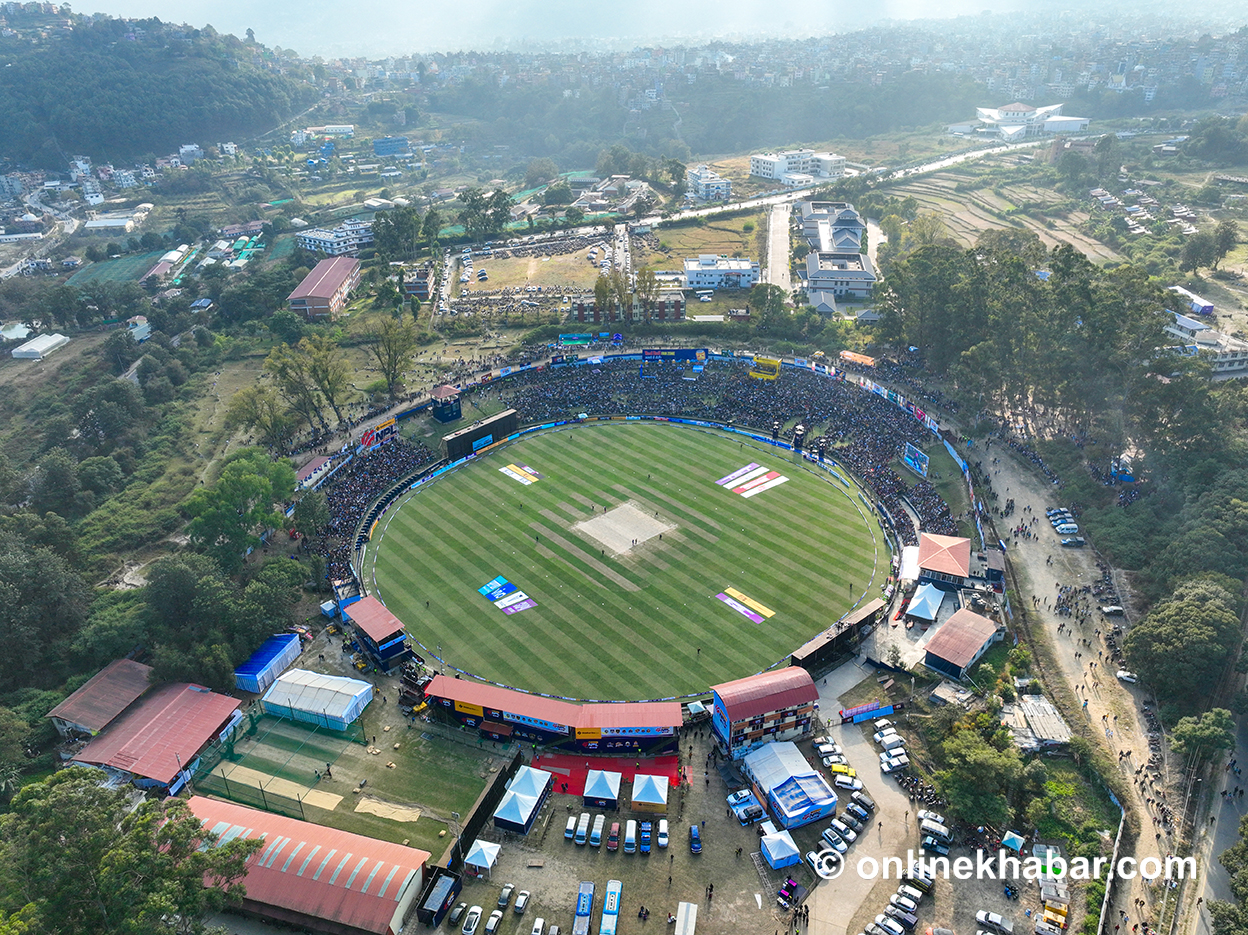
On August 18, 2024, a big flood in the Everest region displaced 135 people in Thame village, and 20 houses that used to be guest houses for tourists were destroyed. Scientists confirmed that two of five glacier lakes above Thame flooded and two others are in a high alter condition.
April 21, 2024, Birendra Lake, a beautiful glacier lake in the Manaslu region of Gorkha exploded, flooding the Chumanubri Rural Municipality. Thankfully, the last village, Samagaon, was quite far from the lake, so no lives were harmed.
August 14, 2023, the entire Kagbeni Bazaar at Baragung Muktikshetra Rural Municipality-4 was drowned by the lake burst in Kagkholā. The impact was so big that 31 houses/hotels in the area, along with a solid bridge and two Jholunge bridges, were washed away.
On October 4, 2023, the Glacier Lake outburst flood (GLOF) at South Lhonak Lake in Sikkim killed more than 100 people.
Going back, some big GLOFs recorded in the history of Nepal were Nare Lake in 1977, Dig Tsho in 1985, Tam Pokhari in 1988, and Chubung Lake in 1991, has killed more than 30 people and displaced over 1300 people in the Mountain area.
These are just a few examples that we heard in the news. Truth be told, there have been more than six small glacier lake outbursts in 2024 until August and 8 of those in 2023. Since 2000, 24 notable glacier outbursts have been studied in the Himalayan Region of Nepal. Many other small Glacier Lake outbursts flood in the remote zone and go unnoticed.
Let’s get an overall status picture of the glacier outburst first.
A report says that almost 15 million people’s lives and property will be threatened by glacier floods around the world until 2050.
As per the ICOIMOD inventory, 2,070 lakes in Nepal are beyond 3000m2 in area. Among them, 1,410 lakes that are larger than 20,000m2 are capable of causing GLOF in future. Further investigation of each of these lakes showed that Forty-seven glacial lakes are potentially dangerous glacial lakes. Among them, 89%, i.e. 42, lies in the Karnali Basin alone.
Three lies in the Gandaki Mountain basin and two glacier lakes are in the Karnali basin. If no human interference is to be made whatsoever, these glacier lakes will result in huge floods by 2030. Further study shows that three hundred fifty other lakes above 20,000m2 will likely cause a flood in mountains by 2050, which means 25% of all glacier lakes in Nepal will be gone.
Why is GLOF increasing?
Glacier Lake outburst is the result of continued global warming since the 1900s. It is estimated there is about 2° F of permanent rise in average global temperature, encouraging rapid melting of snow in Alaska and the Mountains.
The increase in temperature is not just inducing snow melting in the Himalayas; other activities like rock falling, heavy periodic rainfall, and breaching slope failure have resulted in higher GLOF. And the actives are just increasing.
What is the impact of Glacier Lake’s outburst?
GLOF poses a threat to the lives of people living around the glacier lakes. There are a significant number of villagers living around the glacier lake. Naturally, the lives, houses, livestock, and property of these people are the biggest threat.
Let’s take an example. ICIMOD estimates that the Imja Lake outburst, which still is a big threat, can impact the lives of 96,767 people. Thulagi Lake’s outburst, which is another big threat, can impact 165,068 people.
The loss of lives and habitat of rich Mountain fauna should also be taken into account. The Himalayas of Nepal are home to some rare animals and birds such as the Snow leopard, Musk deer, Himalayan Thar, Red panda, Himalayan black bear and more. Since Glacier Lake is a source of water for these animals, there’s a heavy population of wildlife in its area. And, there’s life is also in threat.
Similarly, loss of grazing lands for high altitude livestock, disturbance in the vehicle road and trekking route, re-occurring landslides in the flood area, change in the course of the river and some other long-term impacts have also been observed from the previous glacier outburst.
For a Country like Nepal, where 7% of the national GDP comes from tourism alone, especially from the trekking regions in the mountains, the glacier flood has a big economic impact on mountain tourism. Currently, Mountain regions of Nepal, such as Everest Base Camp, Annapurna, Manaslu, Langtang and more, totally rely on tourism for their livelihood. And with the constant threats of GLOF, surely tourism will see a big impact in the future.
What can be done?
The issue surely sounds very dangerous and complicated. However, simple human interventions can prevent these glacier outbursts. In 2016, Imja Glacier in the Everest region was in alert status, and the Nepal Army built an exit channel for excessive water, merging the lake with the Imja River and lowering the water level.
A similar intervention was done by the Department of Hydrology and Meteorology in the Tso Rolpa of Dolakha. A well-built exit channel, a strong wall around the lake, a plantation in the glacier area, and other simple interventions could save millions in the future.
However, the problem is; that despite regular warnings from the locals, the government does not take even the simplest actions such as building an exit channel. For instance, The Khumbu Rural Municipality takes Rs 2000 as a permit fee from each tourist entering the Municipality, earning over 1 crore per year from the permits alone.
So does the Sagarmatha National Park Authority. Further, a large income from tourism goes to the local government in the form of tax, yet they couldn’t fund a simple mitigation plan; despite continued requests from the people of Thame.
Is our government incapable of spending a few million against the lives and houses of so many people living in the Glacier Lake outburst zone of Nepal?
Is anywhere safe?
Yes, global warming has been rough for the entire world. With Alaska’s snow melting at an unbelievable rate and the sea level rising, many small islands have disappeared, beaches have been moved, and airports have been redesigned. Overall, the impact is felt by the entire world, and not just the Himalayas. As a result, every country has been investing millions of dollars to cope with the changing weather and temperature, trying to mitigate the effect of global warming and deal with emergency conditions.
When are we going to learn from them?
When is the time we stop blaming global warming for this glacier outburst and start planning some sustainable mitigation measures?
If not, we will soon have no beautiful pristine glacier lakes, no villages around the mountains, and no tourists visiting the Himalayas, cause everything is going to drown.























